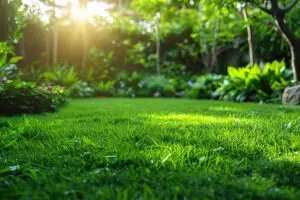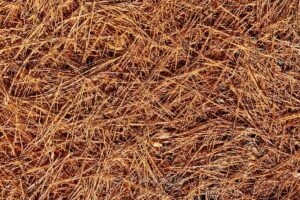This page may contain affiliate links. If you click and buy, we might get a small commission at no cost to you.
If you’re a homeowner, you know that your lawn is a big deal. It’s not just something you see everyday, it can also be used as a play area for your children or to entertain weekend guests. However, certain types of lawn weeds can ruin the appearance of your perfect green space. If left unchecked, these weeds will ruin the beauty of your lawn and kill the grass, leaving unsightly patches of dirt that aren’t very appealing.
Don’t be concerned if this happens to you! Here’s some information about the 25 types of lawn weeds in the U.S. that you can find in your yard.
What is a weed?
A weed is a plant that grows in an inappropriate or undesirable location. These are typically small, tough plants that grow quickly and are difficult to eradicate.
They can be annual (live for one year), biennial (live for two years), or perennial (live many years). Weeds frequently grow in places they shouldn’t, such as between your sidewalk and the street or on your lawn.
These can compete with your grass for water, nutrients, and sunlight when they grow there. Also, if you don’t get them out before they go to seed, more weeds will grow there.
25 types of lawn weeds in the U.S.
1. Ragweed
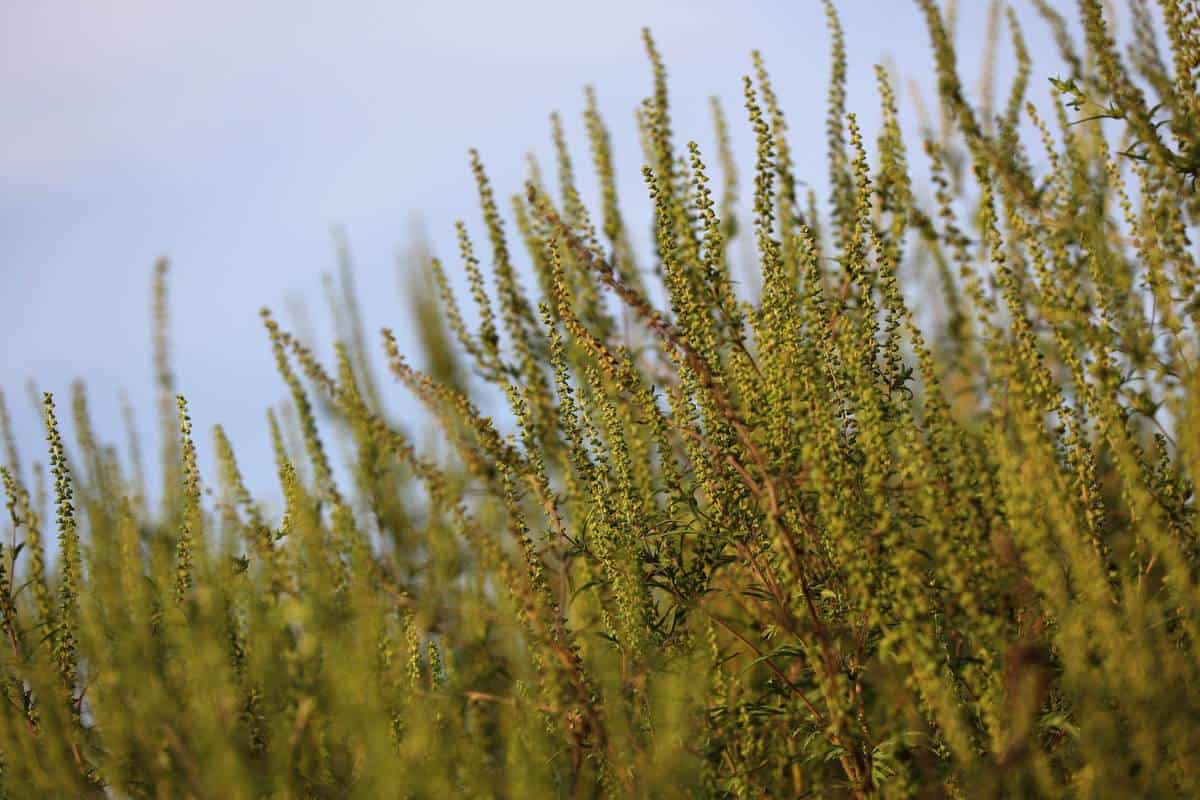
- Scientific name: Ambrosia artemisiifolia
- Time of year: August ; annual
Ragweed is a flowering plant that grows in tropical and subtropical regions. The plant thrives in full sunlight and grows best in heavy soils. It spreads by seed, which is distributed through water, birds, animals, and even farm equipment.
Their leaves are lobed and hairy, with pointed to rounded tips. It can grow up to 6 feet tall and has fine hairs on its stems. Ragweed is widespread across the country, with the exception of Alaska’s far north, where the bitter winter temperatures prevent it from surviving.
2. Goosegrass
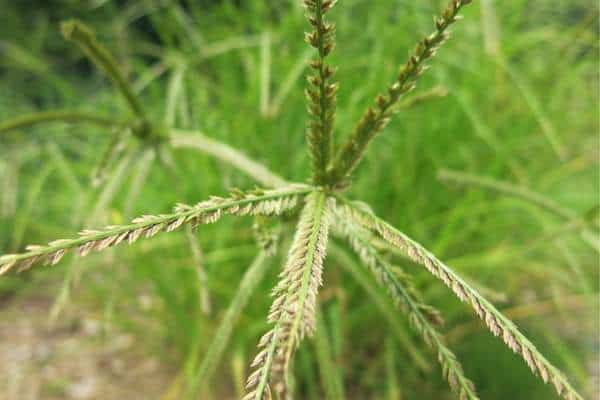
- Scientific name: Eleusine indica
- Time of year: mid to late April ; annual
Goosegrass, also known as bullgrass, is a tropical plant that grows abundantly. It’s a quick-growing weed found in lawns, fields, gardens, and even roadsides.
This weed thrives in warm, sunny environments with compacted soil. Goosegrass spreads rapidly through seeds that germinate in mid to late April. It has flattened leaves that form a mat and is sometimes confused with crabgrass.
3. Crabgrass

- Scientific name: Digitaria sanguinalis
- Time of year: early spring to late summer ; annual
Crabgrass is an issue in lawns all over the world, including in the United States. It’s a weed that grows in poor soils with good drainage and lots of sunlight. Because it produces thousands of seeds and germinates early when the weather is warm, it spreads quickly, especially during hot and dry seasons.
Crabgrass can be controlled by seeding your lawn with a pre-emergent herbicide, which inhibits the growth of new weeds. Use herbicides that’ll kill crabgrass while not harming the other grasses in your lawn.
4. Dandelions
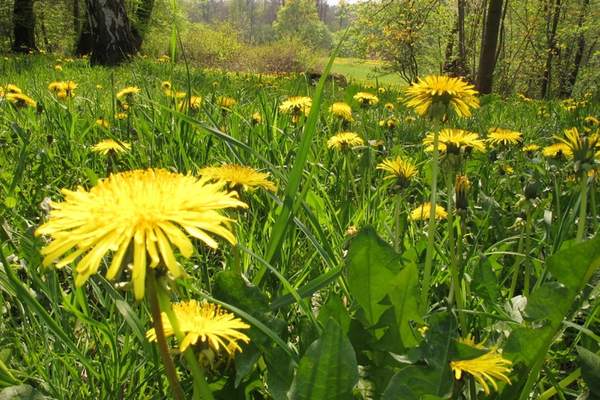
- Scientific name: Taraxacum officinale
- Time of year: early spring ; perennial
Dandelions are a common weed that grows in lawns and other grassy areas all over the world. They thrive in soils rich in nitrogen and potassium, as well as full sun, but will tolerate partial shade. Dandelions grow from a single point of origin, so if you see one on your lawn, there are probably more nearby.
They also spread via their seeds, which are wind-dispersed and can travel long distances. These weeds have hollow stems with long and lobed leaves.
5. Broadleaved plantain
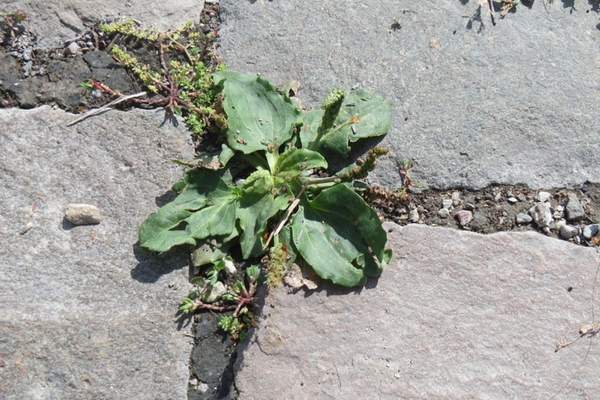
- Scientific name: Plantago major
- Time of year: late winter to late spring ; perennial
Broadleaved plantain is a weed that grows in lawns, garden beds, and other areas where the soil has been disturbed. It thrives in compacted, moist, or dry soil conditions and grows in full sun to partial shade.
It spreads by seed, so if you want to control its growth, you must remove the flowers before the seeds are dispersed. You can also pull or dig up any of these plants in your yard to prevent them from spreading further.
6. White clover
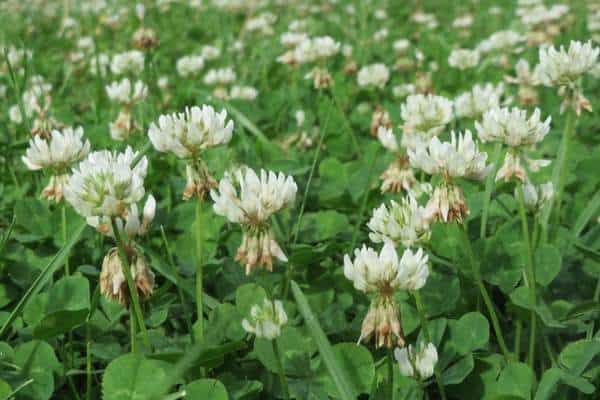
- Scientific name: Trifolium repens
- Time of year: late winter to late spring and mid-fall to mid-winter ; perennial
White clover is a flowering plant that grows in a variety of soil conditions. It’s commonly found growing in lawns and turf areas and is a common issue for lawn owners.
White clover has small white flowers that bloom from June to September. These flowers produce seeds that germinate after they have died and fallen to the ground.
This weed prefers well-drained, fertile soil and doesn’t thrive in hot, dry conditions. The plant can grow up to 8 inches tall and has trifoliolate leaves with oblong leaflets.
7. Marestail
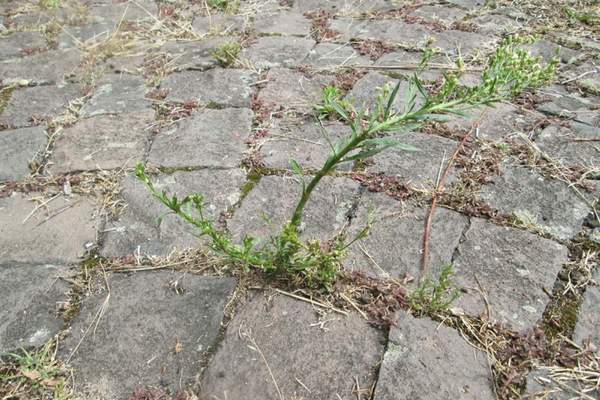
- Scientific name: Erigeron canadensis
- Time of year: late-summer ; annual
Marestail is an annual plant that can reach a height of 6 feet. This weed is common in lawns and gardens. It has a deep root system and is one of the most difficult weeds to eradicate.
The plant is distinguished by its upright and slender stem and hairy and toothed leaves. It has greenish-white flowers that bloom in clusters in the summer. Since the seeds of this weed are wind-borne, they can quickly spread across lawns and gardens if you don’t control them early on.
8. Bindweed

- Scientific name: Convolvulus arvensis
- Time of year: mid-spring ; perennial
Bindweed is a broadleaf plant that grows mid-spring, and can appear as a weed in your lawn. It spreads through underground seeds, stems, and roots. The plant has small white-pink flowers and heart-shaped leaves that are green in color.
This weed spreads quickly and reproduces easily, making it difficult to eradicate once it has established itself in your yard. Certain herbicides, however, can be used to keep them from spreading on your lawn.
9. Quackgrass

- Scientific name: Elymus repens
- Time of year: April through May; perennial
One of the most common weeds you may find in your lawn is quackgrass. It’s a perennial weed that spreads quickly, especially in heavy soils exposed to full sun.
This grass has tall, narrow blue-green leaves and can grow to be 1 to 4 feet tall. It spreads via seeds and rhizomes (underground roots) and can be difficult to eradicate once established in your lawn or garden area.
10. Canada thistle
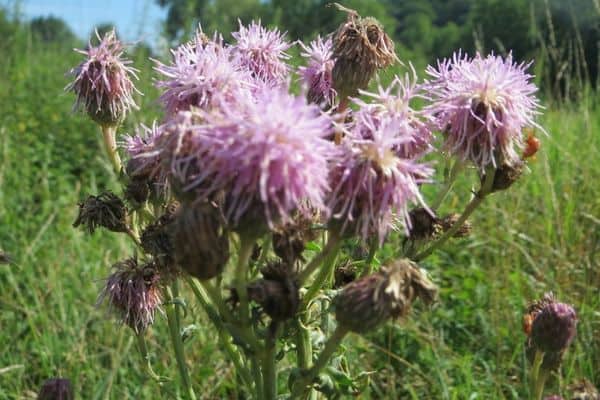
- Scientific name: Cirsium arvense
- Time of year: fall or early spring ; perennial
A Canada thistle is an invasive weed with alternate lobed leaves and toothed margins that can grow up to five feet tall. This plant also has purple and pink flowers that grow in clusters. They thrive in moist soil and full sun, and can withstand drought.
This weed spreads easily via seed dispersal, which is easily carried by the wind. To prevent Canada thistle from growing on your lawn, you can either pull it out by hand or spray it with herbicide.
11. Nutsedge
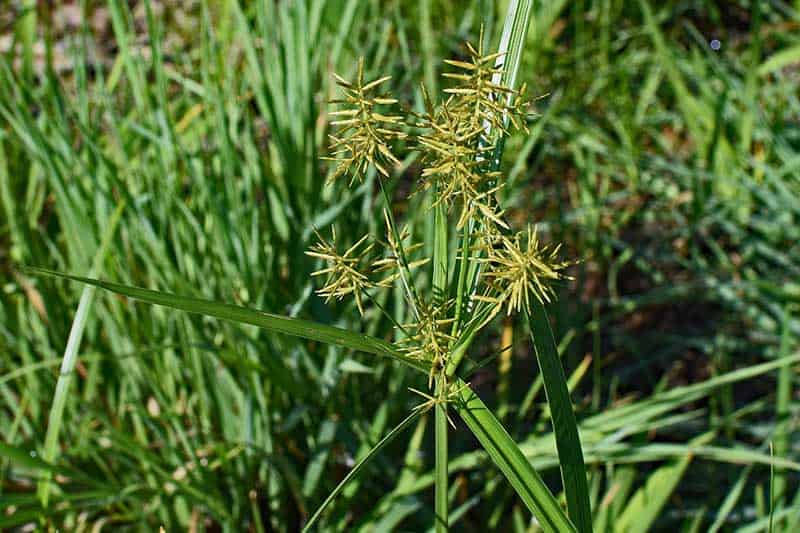
- Scientific name: Cyperus rotundus
- Time of year: spring ; perennial
Nutsedge is a perennial weed that grows in moist soil and, if established, in dry soil as well. It’s common in lawns, cultivated fields, waste areas, roadside ditches, pastures, and even riverbanks.
This sedge can grow in areas of your lawn that are frequently watered, and have poor drainage. It’s distinguished by its yellow-green grass-like leaves.
They also produce flowers where the seeds are located. To keep these plants from growing in your lawn, keep them mowed on a regular basis to prevent the flowers from growing and producing seeds.
12. Buckhorn plantain
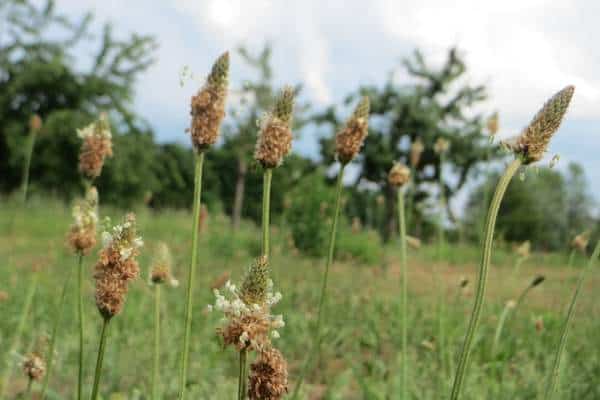
- Scientific name: Plantago lanceolata
- Time of year: all year round ; perennial
Buckhorn plantain is a perennial weed found in lawns, waste areas, and pastures. It spreads through tiny seeds that are carried by the wind and scattered in different areas.
This weed has long, narrow leaves that are wide and pointed at the tip, giving it a lanceolate shape. It has white flowers that grow on spikes with a brown, cylindrical head. If this plant appears in your lawn, you can control its growth and spread by pulling or digging it.
13. Purslane

- Scientific name: Portulaca oleracea
- Time of year: late spring ; annual
Purslane is a weed that can grow and appear on your lawn. They do best in warm and temperate climates. It’s very common in the United States, especially during the summer.
Purslane grows best in full sun and prefers sandy soil with good drainage. It spreads through seed, which is carried by birds or the wind. This plant is also edible, so if you see it growing in your garden or lawn, you can hand-pull to eliminate them and use it for cooking.
14. Lambsquarters
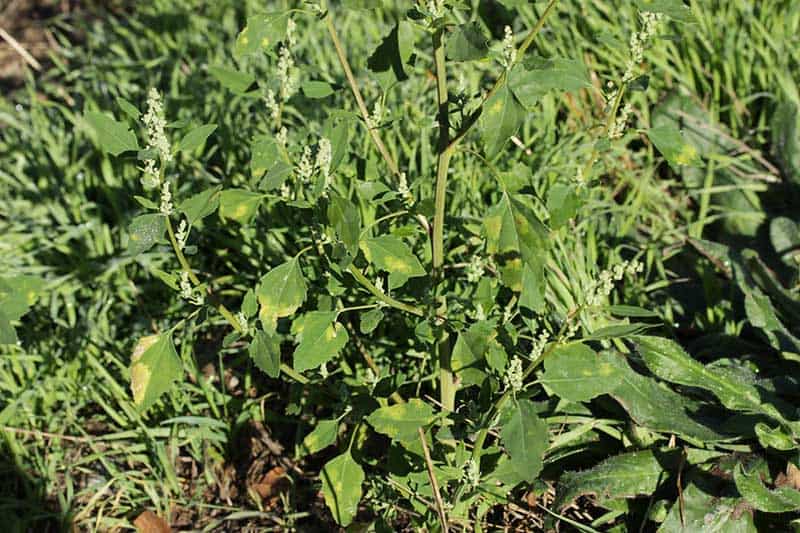
- Scientific name: Chenopodium album
- Time of year: spring ; annual
Lambsquarters is a weed that you can find throughout the United States. It’s extremely persistent, so you should get rid of it as soon as possible. These weeds have reddish-streaked stems and are somewhat succulent.
The plant grows best in rich soil with high levels of nitrate and full sunlight, so if you have the right soil, it will thrive. It spreads through seeds, which germinate quickly during the growing season.
15. Creeping charlie
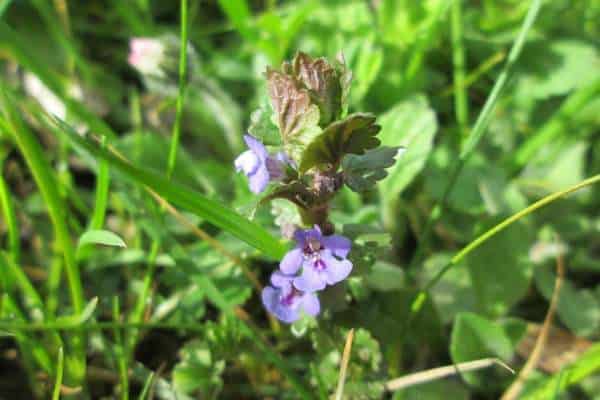
- Scientific name: Glechoma hederacea
- Time of year: Spring ; perennial
Creeping charlie is a common weed that grows in damp, slightly acidic soils. They also do well in shade and spread through seeds and stolons. These stolons, also known as runners, creep along objects, trees, and ground near the plant.
It has kidney-shaped leaves with scalloped edges that are bright green. It also has bluish-purple flowers that bloom in the spring. Use a postemergence broadleaf herbicide to kill off existing plants and control creeping charlie in your lawn.
16. Shepherd’s purse
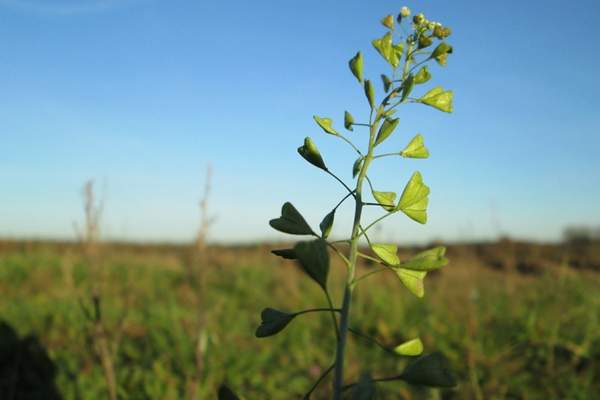
- Scientific name: Capsella bursa-pastoris
- Time of year: spring and early fall ; annual
Shepherd’s purse is a plant in the mustard family that has long been considered a weed in the United States. It thrives in clay and sandy loam soils with full or partial sun. It could also withstand adverse conditions such as drought.
The plant has green to purple stems and egg-shaped leaves that are typically dark green in color. Shepherd’s purse can reach a height of 26 inches and can be controlled with herbicides.
17. Chickweed

- Scientific name: Stellaria media
- Time of year: fall ; perennial
Chickweed is a low-growing annual plant that typically forms a dense mat in lawns and gardens. It has small white flowers and egg-shaped leaves with pointy tips. Chickweed spreads by seed, but it can also spread underground via its stems and roots.
The plant prefers moist soil conditions, particularly those high in nitrogen. It prefers full sun but will grow in partial shade as well. Keep your lawn healthy and thick to keep this plant from spreading and establishing.
18. Pigweed
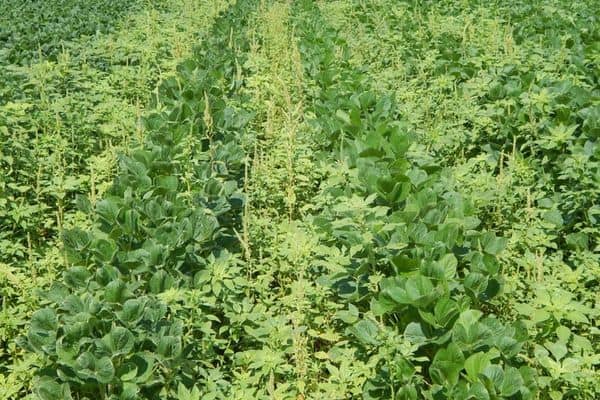
- Scientific name: Amaranthus retroflexus
- Time of year: late spring and early summer ; annuals
Pigweeds, also known as careless weeds, are plants from the Amaranthaceae family. They spread quickly and grow rapidly, making them difficult to control if you don’t know how to identify and treat them.
These plants are common in lawns, along roadsides, in gardens, and other areas with poor soil and hot weather. Pigweeds can grow to be bushy plants with a height of 7 feet.
They have oval to diamond-shaped leaves on red-colored fleshy stems. You can remove these plants by hand or use a pre-emergence herbicide to eliminate them from your lawn.
19. Wild violets
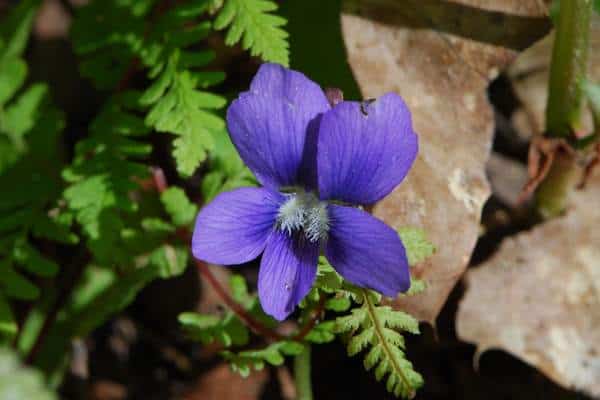
- Scientific name: Viola sororia
- Time of year: early spring ; perennials
Wild violets can grow in almost any soil type, but they prefer moist, well-drained soil. The plant also favors temperatures ranging from 60 to 80 degrees Fahrenheit. Since these violets spread easily through seeds and underground rhizomes, they can be difficult to control.
You can control growing wild violets by pulling up unwanted plants as soon as you notice them sprouting up in your yard, but if it’s already established, herbicides may be the most effective.
20. Doveweed

- Scientific name: Croton setigerus
- Time of year: late spring ; annual
A doveweed is a weed that can grow easily in lawns and gardens. It spreads quickly and grows well in high-moisture environments, so control it before it takes over your yard.
Doveseed has creeping stems that attach themselves to the ground and spread. Its glossy, dark-green leaves are similar to St. Augustinegrass in appearance.
These weeds thrive in sunny areas, so having a densely thick and healthy turf in your yard can limit their growth by limiting the amount of sunlight that doveweed receives.
21. Chamberbitter
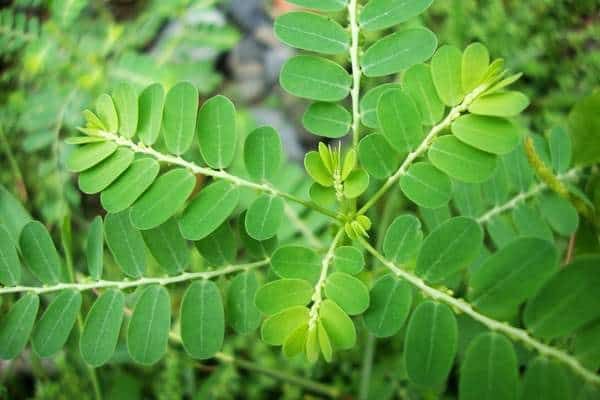
- Scientific name: Phyllanthus urinaria
- Time of year: summer ; annual
Because its foliage resembles that of the mimosa tree, this annual weed is also known as little mimosa. It blooms in the summer and prefers warm soils with temperatures above 75 degrees.
They also reproduce by producing seeds on their branches. There are several methods for controlling the growth of Chamberbitters in your lawn, including manual removal or the use of herbicides such as glyphosate.
22. Florida betony

- Scientific name: Stachys floridana
- Time of year: fall ; perennial
Florida betony is a perennial weed native to Florida that has spread to Virginia and Texas and is now known as one of the aggressive weeds that grow in lawns, gardens, and along roadsides. It has coarse, hairy stems and white tubers that resemble rattlesnake rattles.
This plant also produces pinkish to purplish-white flowers. You can keep your turfgrasses healthy or apply herbicides to prevent Florida betony from growing and spreading on your lawn.
23. Japanese clover
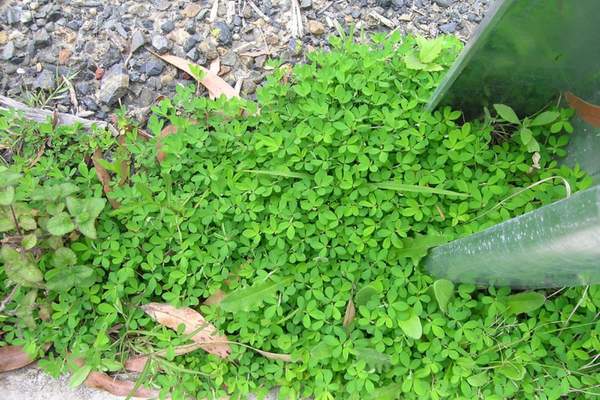
- Scientific name: Kummerowia striata
- Time of year: summer ; annual
Japanese clover is a rapidly spreading, invasive plant that frequently takes over lawns. It’s distinguished by small pink, purple, and white flowers that bloom from August to September. It grows in almost any type of soil, but prefers moist soil in full sun.
It spreads rapidly through seeds and can compete for nutrients from other plants. The best way to control Japanese clover is to remove it by hand, especially in the summer when it’s just beginning to grow.
24. Curly dock
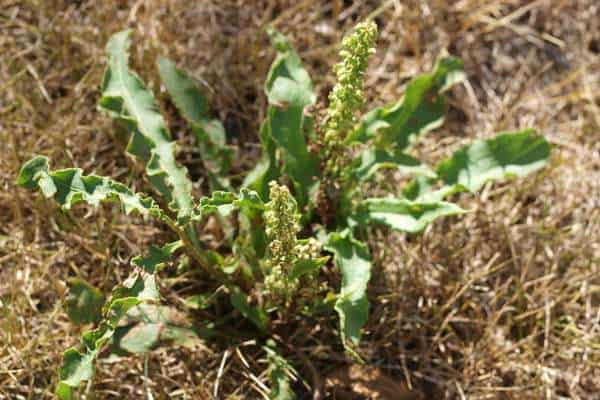
- Scientific name: Rumex crispus
- Time of year: late spring through early fall ; perennial
Curly dock is a perennial weed that grows in wet areas and spreads by seed. It has long, curly leaves and can grow to be 2 to 5 feet tall. This weed is a nuisance because it grows in lawns, crowding out the grass and creating a poor playing surface.
It requires a lot of sunlight and moist to dry soils to grow well, and if you’re having trouble with this weed, consistent grazing and mowing can help you eliminate it.
25. Kochia
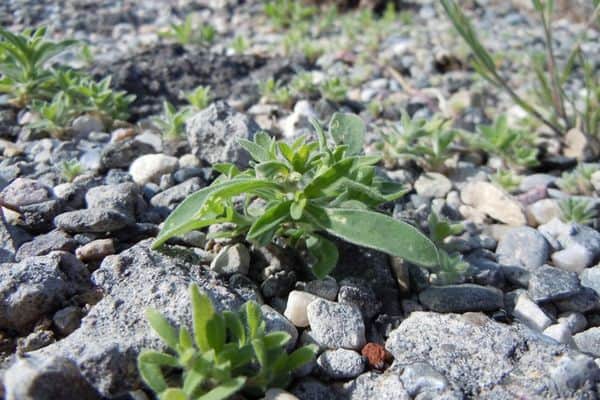
- Scientific name: Bassia scoparia
- Time of year: spring and summer ; annual
Kochia is a plant that grows in the United States and is known to be one of the aggressive weeds that invade lawns. It thrives in poor soil conditions and is even drought-tolerant.
The plant spreads quickly and can cause problems with other plants. It can reach a height of 6 feet and has hairy leaves that turn purplish-red in the fall. To control Kochia in your lawn, use herbicides and mow regularly.


